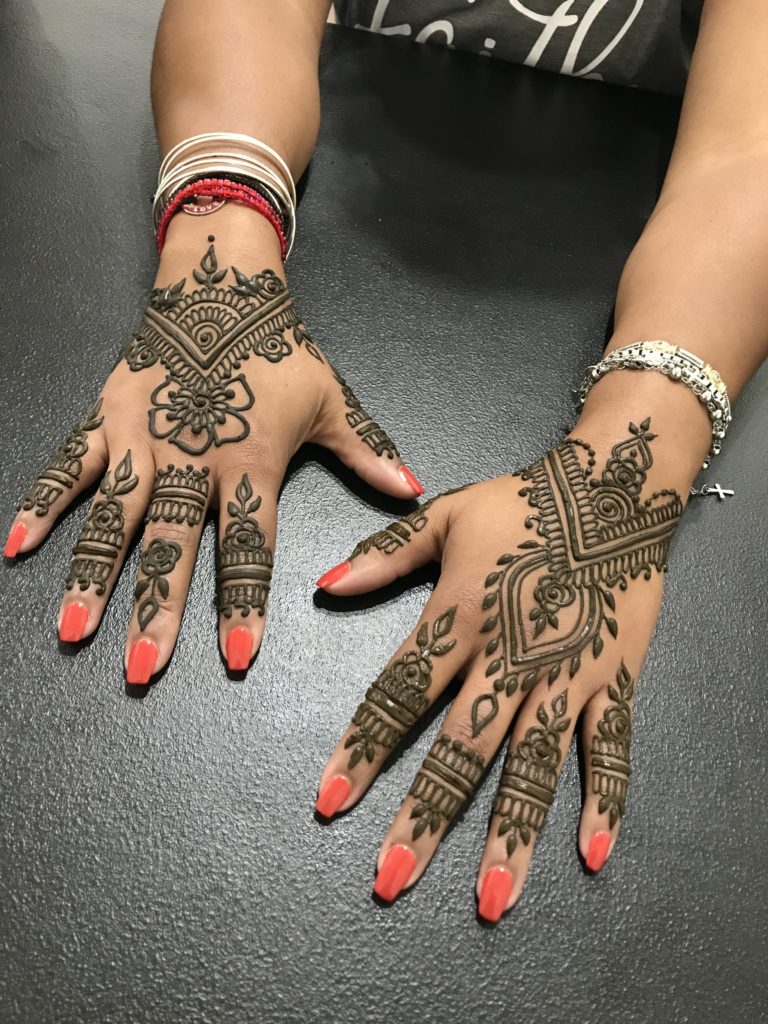Have you ever been open vacation or at a festival and gotten henna done that was very black? It might have even smelled a little funny and been more ink-like in texture rather then a natural paste like how henna normally should be.
There are several places that do still offer black henna. A few things you need to look out for:
- the “black henna” is very ink-like in texture
- it stains a dark black stain
- the scent of the ink is off such as in a more chemical type of scent
- they tell you to leave it on for a very short period of time like 20-30 minutes (maybe 60 minutes)
- when it dries it lays flat and not 3 dimensional (like puffy paint)
- the stain is clearly black and very ink-like in style
- it’s itchy
There is a big difference in natural henna and what is called black henna (not to be confused with black henna hair dye which will be discussed in a new blog post).
Black henna tends to be chemical hair dye mixed in with henna. I know this because before I knew any better, I myself saw this with my own eyes. I had it done and had a really bad allergic reaction where I was lucky not to have scars from.
Chemical hair dye should never be applied onto the skin. Ever.
This is how black henna can scar your skin
Natural henna will NEVER be black. Natural henna comes from a plant that dyes reddish-brown tones. A plant naturally can only create one color tone, not several different colors. This does not exist in body art nor hair care naturally. A plant doesn’t;t make more then one color. It’s just not possible.
It would be great if the FDA, or applicable authority would specifically ban black henna use, such as Health Canada has done, and regulate all henna body artists to ensure that we all receive natural and safe henna body art services. We hope to see changes in this in the future.
Black henna is created when people take henna powder and add PPD (or black powders) to it, such as commercial powdered hair dyes, and chemical based powders. They mix it together, and get the henna paste to become ink-like in texture, rather then being a paste. It will come out pure black in color, and not look greenish-brown like natural henna paste is. Black henna creates a black temporary tattoo that can leave you scarred for life.
Some people tell us that it hasn’t happened to them, so they aren’t concerned. This just isn’t good enough. Aren’t we supposed to be caring for our bodies and using more natural, organic methods of living? We have to take a proactive stand on what goes into our bodies. PPD and these chemicals cause cancer and other life threatening diseases. Don’t put yourself at risk nor a loved one.
Henna is meant to be a beautiful experience each and every time. The healing, blessing and beauty of henna is to be treasured and shared with everyone. Through a simple henna plant bring beauty, passion and wellness to every person. The henna plant has beautifully and naturally colors and strengthens, such as for hair care and healing for those suffering from HFS (cancer patients).
Natural henna body art
There is also natural alternatives to blue to black body art stains through the use of jagua. Jagua is a fruit that grows in South America that produces a natural blue stain, such as what you may have seen on traditional Amazonia tribes for temporary body art tattoos.
We love using jagua as part of our services and we highly encourage you to do the same for personal and business use. You can even create two toned designs using jagua.
Shop for all of your henna and jagua body art products with us here at Henna Sooq. We even have free books for you to download.










This is the most articulate article on PPD I have ever seen! Well done and thanks from the henna community!
Kristy, wow. This means a lot to us. I thought, wow, really??!! 🙂 I’m so glad!